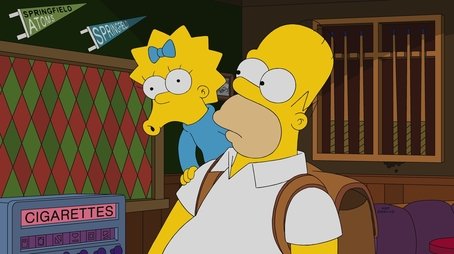
Sorry, we have not watched this yet.

Homer discovers that Maggie is a whistling savant and launches her baby-celebrity career. Meanwhile, Marge impresses Fat Tony with her interior design taste, and he hires her to style his brothel.
Sorry, we have not watched this yet.